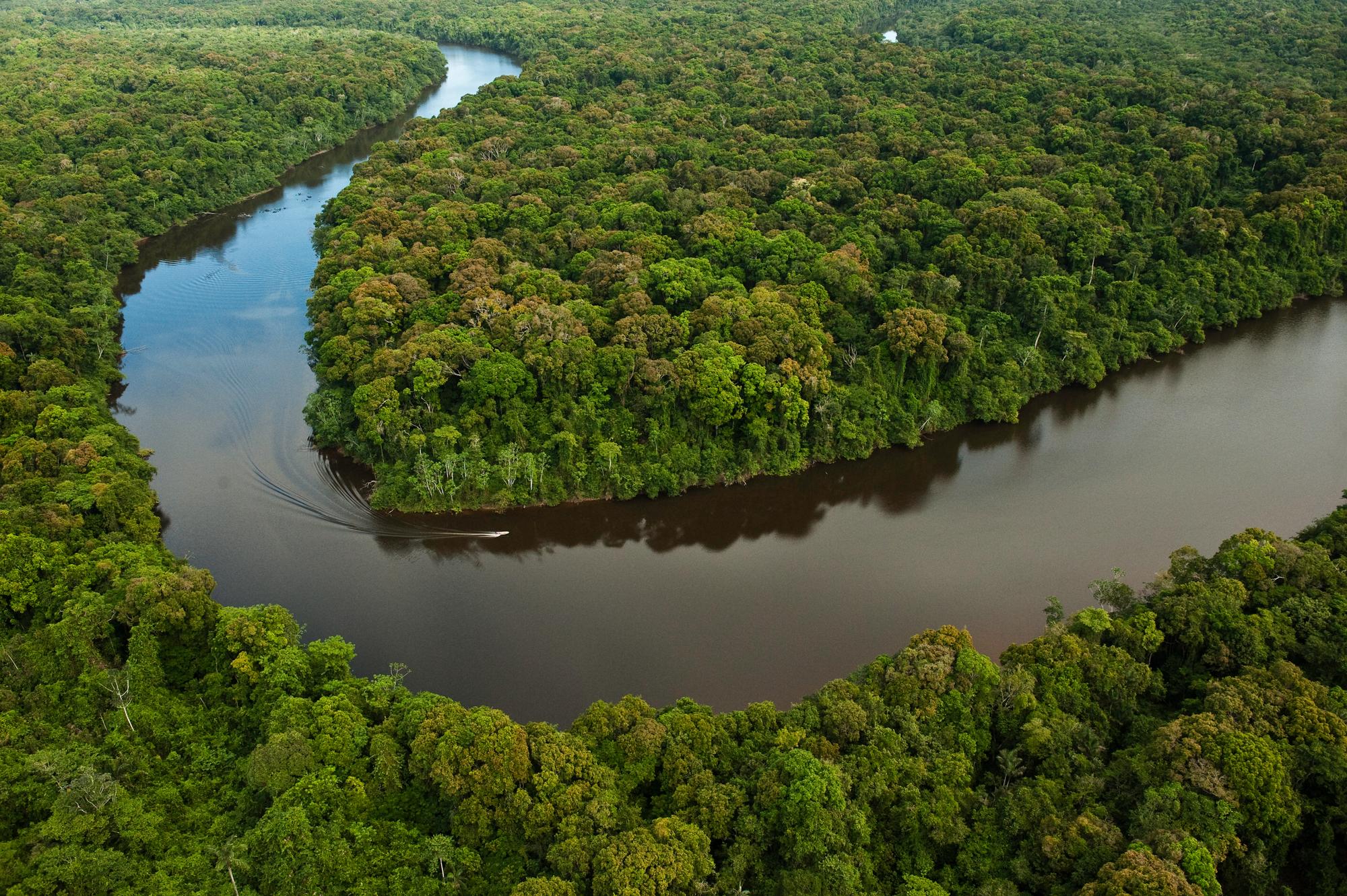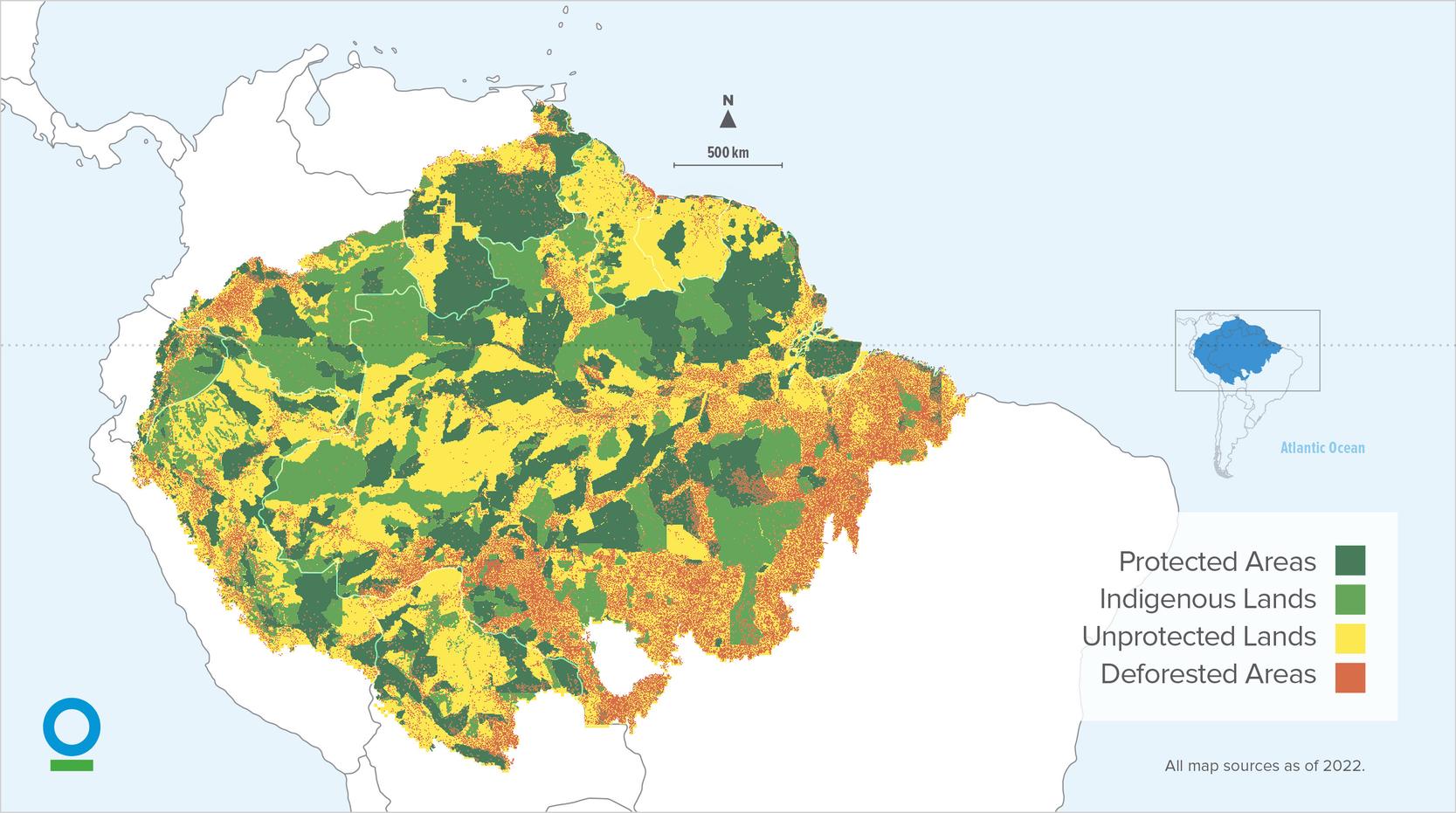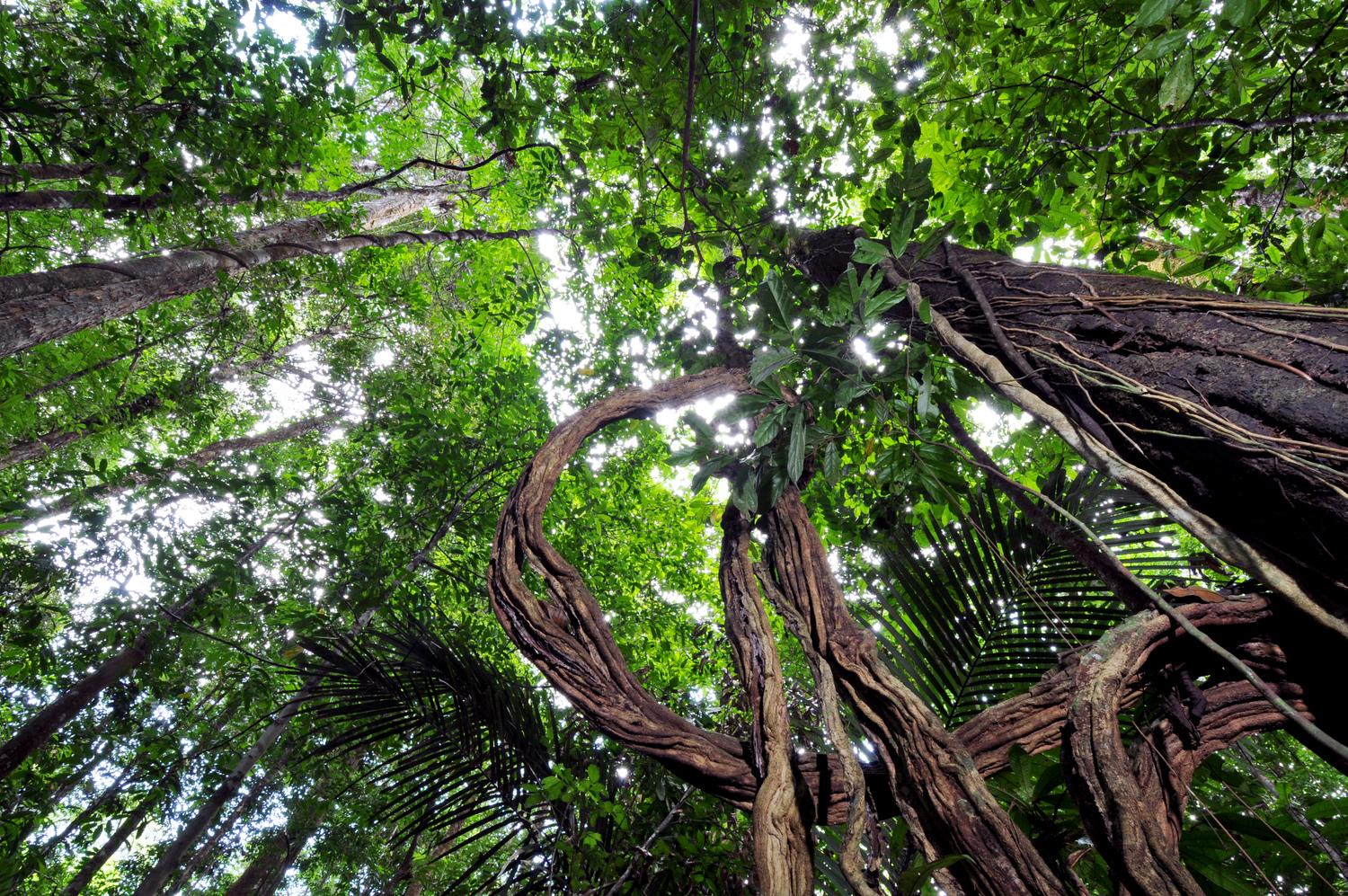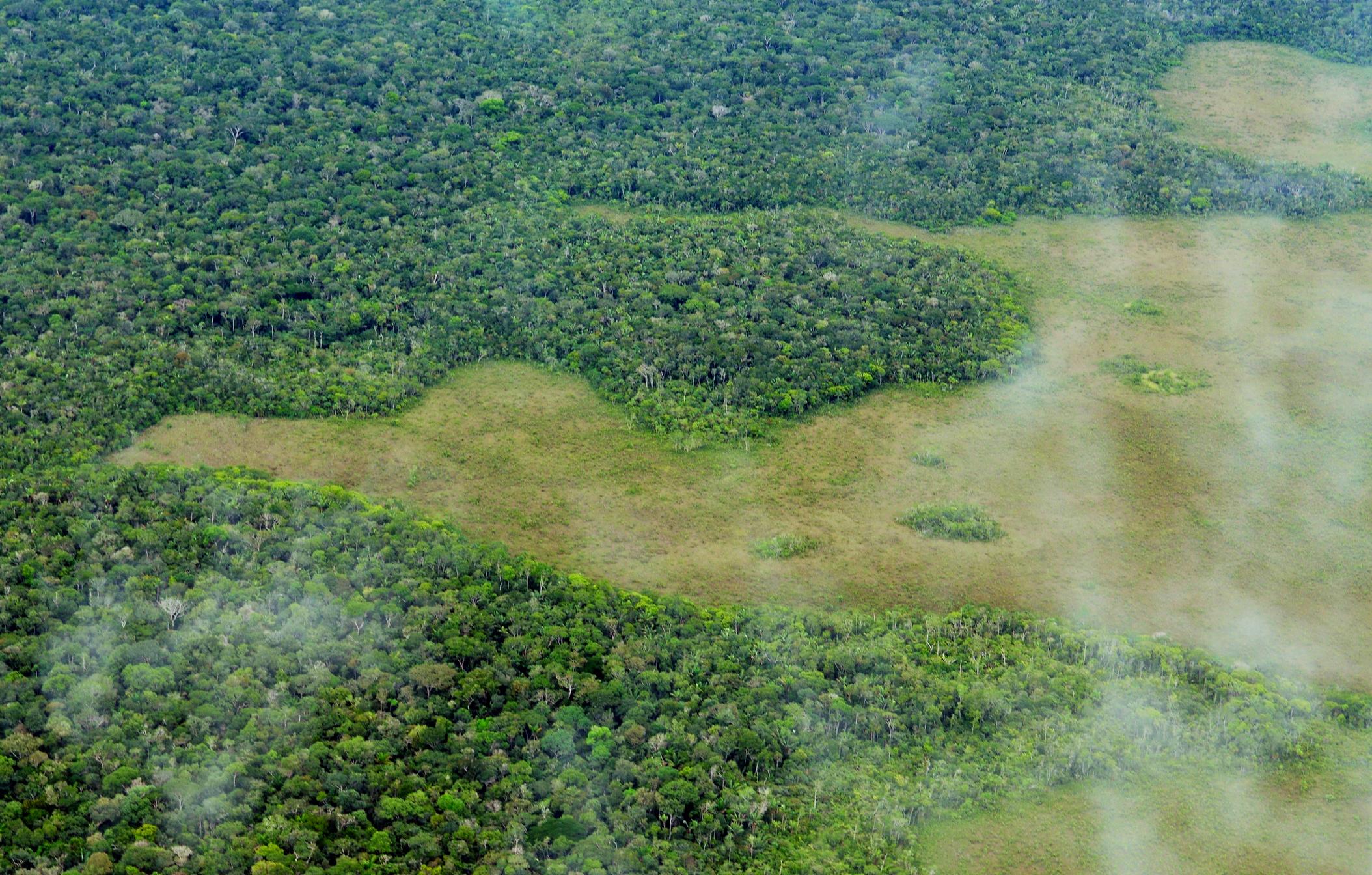
As the largest forest in the world, stretching from the Atlantic Ocean to the Andes, Amazonia stores massive amounts of carbon, making it critical to Earth’s climate. Amazonia directly supports the lives of over 40 million people and more than 500 Indigenous groups across nine countries: Bolivia, Brazil, Colombia, Ecuador, French Guyana, Guyana, Peru, Suriname and Venezuela. But humans are driving the region to the brink.
Why is Amazonia important?
10%
of all known species
The forests of Amazonia host the richest biodiversity of any terrestrial ecosystem on Earth.
20%
of all freshwater flows on the planet
Amazonia’s river system supplies food, livelihoods, transportation, and energy for millions of people.
22%
of all irrecoverable carbon* stored in nature
31.5 Gt of carbon is stored in the tropical forests and peatlands of the Amazon.
50%
of Amazonia is under some type of legal protection
One quarter of Amazonia is owned by Indigenous peoples.
* Irrecoverable carbon refers to the vast stores of carbon in nature that are vulnerable to release from human activity and, if lost, could not be restored by 2050.
The time is now
For millennia, the Amazon rainforest has thrived on an endless cycle of rainfall supported by billions of trees recycling water back into the atmosphere. But as more trees are cleared, the forest is losing its ability to retain moisture. If this cycle of destruction continues, the rainforest will be pushed to an ecological tipping point — gradually turning into a dry savanna.
Experts warn that could set off catastrophic consequences, including the loss of Indigenous cultures and Amazonian livelihoods, and a massive decline of biodiversity.
We are in a race against time, and a rapidly changing climate, to sustain the forests of Amazonia, so that they can continue to sustain us all.

The challenge
Roughly of the Amazon rainforest has been deforested so far by the expansion of agriculture, grazing land, extractive industries and urban development. Scientists estimate that the “tipping point” for the forest could occur after 20-25 percent of the forest is lost.
If this occurs, Earth’s climate will change irrevocably, affecting all life as we know it.
Our goal
Conservation International is committed to preventing the “tipping point” in Amazonia. By 2025, we aim to conserve 80 percent of the forest while ensuring increased prosperity and human well-being in the region.
Our strategy
We have a three-pronged solution: Protect. Strengthen. Restore.
We are working to protect 12 million hectares (30 million acres) in new conservation areas, strengthen management of 100 million hectares (247 million acres) of existing protected areas, Indigenous lands and other conservation areas, and restore 115,000 hectares (284,000 acres) of degraded lands.
Collaboration is central to meeting these ambitious goals. Conservation International is building on our 35-year history in the region — forging partnerships with governments, Indigenous peoples, local communities, the private sector, civil society, donors and investors to make this happen.
Protect
Fortunately, half of the Amazon Rainforest is formally conserved through protected areas, Indigenous lands and other conservation areas. We are working to conserve an additional 30 percent by helping to create new protected areas, supporting the expansion of Indigenous lands and establishing conservation incentive programs across the Amazon.
We seek to protect nature by promoting the development of sustainable economies that support communities livelihoods and good governance.
Strengthen
Despite their protected status, approximately 345,000 hectares (852,000 acres) of forest are lost annually within formally protected areas due to poor management. To further strengthen formally conserved areas, we target areas that are at the greatest risk of forest loss due to poor or insufficient management, offering training and funding.
In response, Conservation International has developed partnerships, innovative financial mechanisms and incentive programs that support Indigenous peoples and local communities to protect their territories — co-creating solutions for long-term conservation through alternative livelihoods and enterprise development.
Restore
To conserve Amazonia and mitigate global climate change, we must restore forests that have already been lost or heavily degraded. Conservation International is promoting sustainable agricultural methods that work with nature, rather than against it, and working to change or adapt current production systems so that they no longer result in deforestation or the degradation ecosystems.
We are also helping governments restore degraded landscapes back into natural ecosystems, proving that it can be done in a cost-effective way that yields multiple benefits to local communities. Conservation International is working to build coalitions in sites with similar challenges in an effort to build better governance and more coordinated efforts to restore ecosystems and avoid deforestation.

Environmental and social safeguards
Social and environmental safeguards are designed to prevent harm to people and nature and enhance projects’ conservation results. Guiding our efforts is Conservation International’s Environmental and Social Safeguard System (CISS), which provides all the policies, standards, procedures and guidance to ensure our projects are inclusive, equitable and environmentally responsible.
The implementation of environmental and social management plans, gender action plans, and stakeholder engagement plans in each country is ongoing.

Accountability and Grievance Mechanism
Each country has established an Accountability and Grievance Mechanism to address any concerns or complaints from our project stakeholders, including individuals, organizations and communities. The Accountability and Grievance Mechanism allows us to have an open and transparent process to deal with any issues affecting our stakeholders, ensuring a rights-based approach to conservation.